Nodes Browser
ComfyDeploy: How ComfyUI-PixtralLlamaMolmoVision works in ComfyUI?
What is ComfyUI-PixtralLlamaMolmoVision?
For loading and running Pixtral, Llama 3.2 Vision, and Molmo models. Put models in the models/LLM folder.
How to install it in ComfyDeploy?
Head over to the machine page
- Click on the "Create a new machine" button
- Select the
Editbuild steps - Add a new step -> Custom Node
- Search for
ComfyUI-PixtralLlamaMolmoVisionand select it - Close the build step dialig and then click on the "Save" button to rebuild the machine
ComfyUI-PixtralLlamaMolmoVision
For loading and running Pixtral, Llama 3.2 Vision, and Molmo models.
Important change compared to last version: Models should now be placed in the ComfyUI/models/LLM folder for better compatibility with other custom nodes for LLM. I apologize for having to move your models around if you were using the previous version.
Includes nodes for loading and running VLMs:
- Load Vision Model
- Load Pixtral Model
- Load Llama Vision Model
- Load Molmo Model
- Generate Text with Pixtral
- Generate Text with Llama Vision
- Generate Text with Molmo
Along with some utility nodes for working with text:
- Parse Bounding Boxes
- Parse Points
- Plot Points
- Regex Split String
- Regex Search
- Regex Find All
- Regex Substitution
- Join String
- Select Index
- Slice List
The Load Vision Model node is able to load any of these model types, but it will also be able to load other models in the LLM folder. Other model types, like Florence2, will not work with these nodes, though.
The other model loading nodes are for specific model types and will filter the list to just that model type.
The text generation nodes are model-specific. Pixtral seems to be the only one out of these that currently supports repetition penalty. I plan to add some more nodes for creating prompts following a chat sequence.
The Generate Text with Pixtral node can take the [IMG] special token in the prompt, and should include it for as many images as you want to process in a single prompt. If these tags aren't added, they will be automatically added to the beginning of your prompt. The Llama and Molmo models will add the images to the beginning of the prompt automatically, and while they do support processing multiple images at once, they don't support including multiple images in different places in the prompt like this.
System prompts are optional. I didn't include them for Pixtral because the current setup is already using the [INST] special token, so the pixtral prompting is already like a system prompt rather than a user conversation. I might change this later.
Use trust_remote_code at your own risk. (I think Molmo looks safe, though)
Installation
Available in ComfyUI-Manager as ComfyUI-PixtralLlamaVision. When installed from ComfyUI-Manager, the required packages will be installed automatically. You may need to update your pytorch version.
If you install by cloning this repo into your custom nodes folder, you'll need to install transformers >= 4.45.0 to load Pixtral and Llama Vision models, and you'll also need to make sure accelerate, bitsandbytes, and torchvision are updated. You can install these in the windows portable version of ComfyUI with:
python_embeded\python.exe -m pip install -r ComfyUI\custom_nodes\ComfyUI-PixtralLlamaVision\requirements.txt
Models should be placed in the ComfyUI/models/LLM folder, with each model inside a folder with the model.safetensors file along with any config files and the tokenizer.
You can get a 4-bit quantized version of Pixtral-12B and/or Llama-3.2-11B-Vision-Instruct which is compatible with these custom nodes here:
https://huggingface.co/SeanScripts/pixtral-12b-nf4
https://huggingface.co/SeanScripts/Llama-3.2-11B-Vision-Instruct-nf4
Unfortunately, the Pixtral nf4 model has considerably degraded performance on some tasks, like OCR. The Llama Vision model seems to be better for this task.
Examples
Example Pixtral image captioning (not saving the output to a text file in this example):
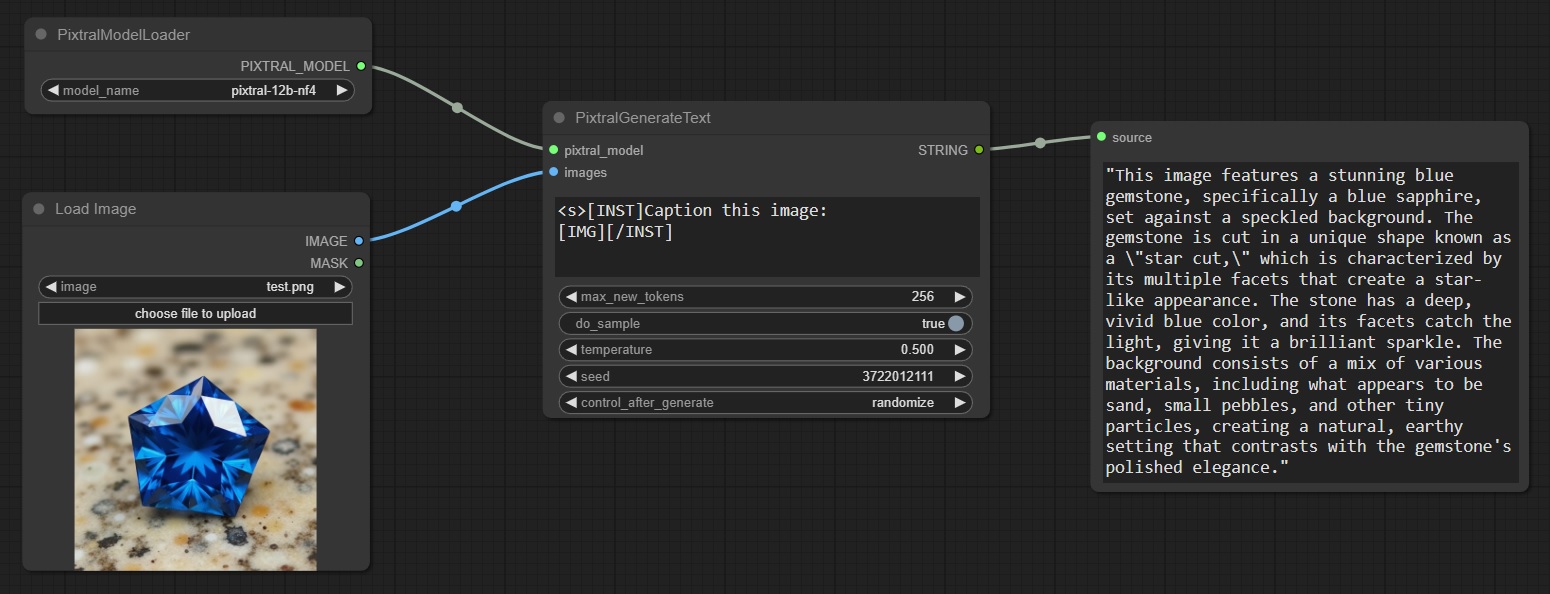
All of these models should work very well for image captioning, even in 4-bit quantization. You can also customize your captioning instructions. Larger images might not work as well with Pixtral, so scaling them down to something like 512 x 512 before sending them to the text generation node might be a good idea. It's also worth noting that the nf4 Pixtral model has significantly degraded performance on images which consist of mainly text.
Example Molmo dataset captioning for a LoRA:
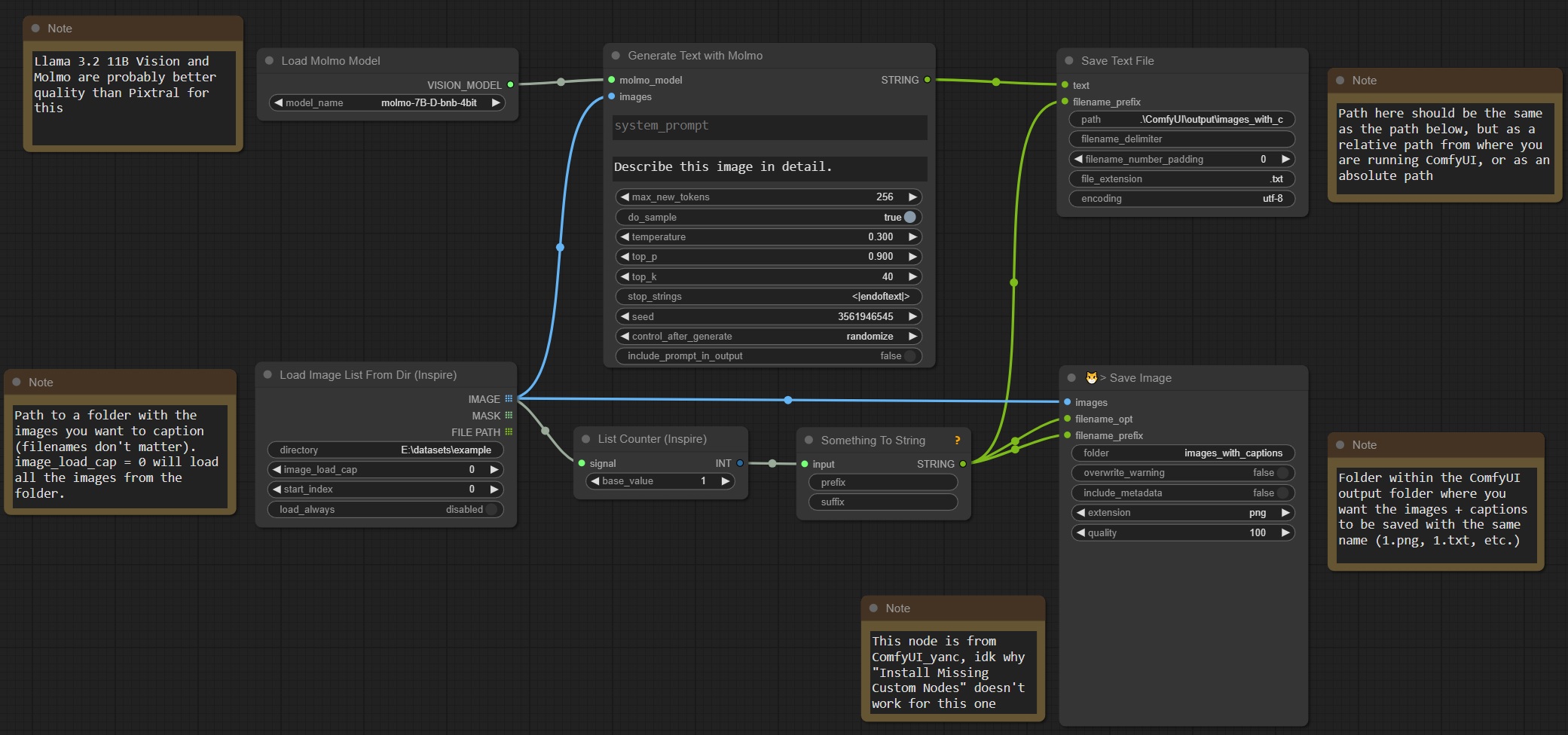
This workflow sends a list of images to the image generation node to caption each of them sequentially, and creates images and text files in a folder with names 1.png, 1.txt, etc for easy LoRA training setup.
Note that for captioning each image separately, this input should be a list, not a batch of images, because these models can take multiple images as input for a single generation. Currently these nodes don't support batched text generation, but I might add that in the future. Doing one text generation task at a time is probably better for people with normal amounts of VRAM though.
Example Pixtral image comparison:
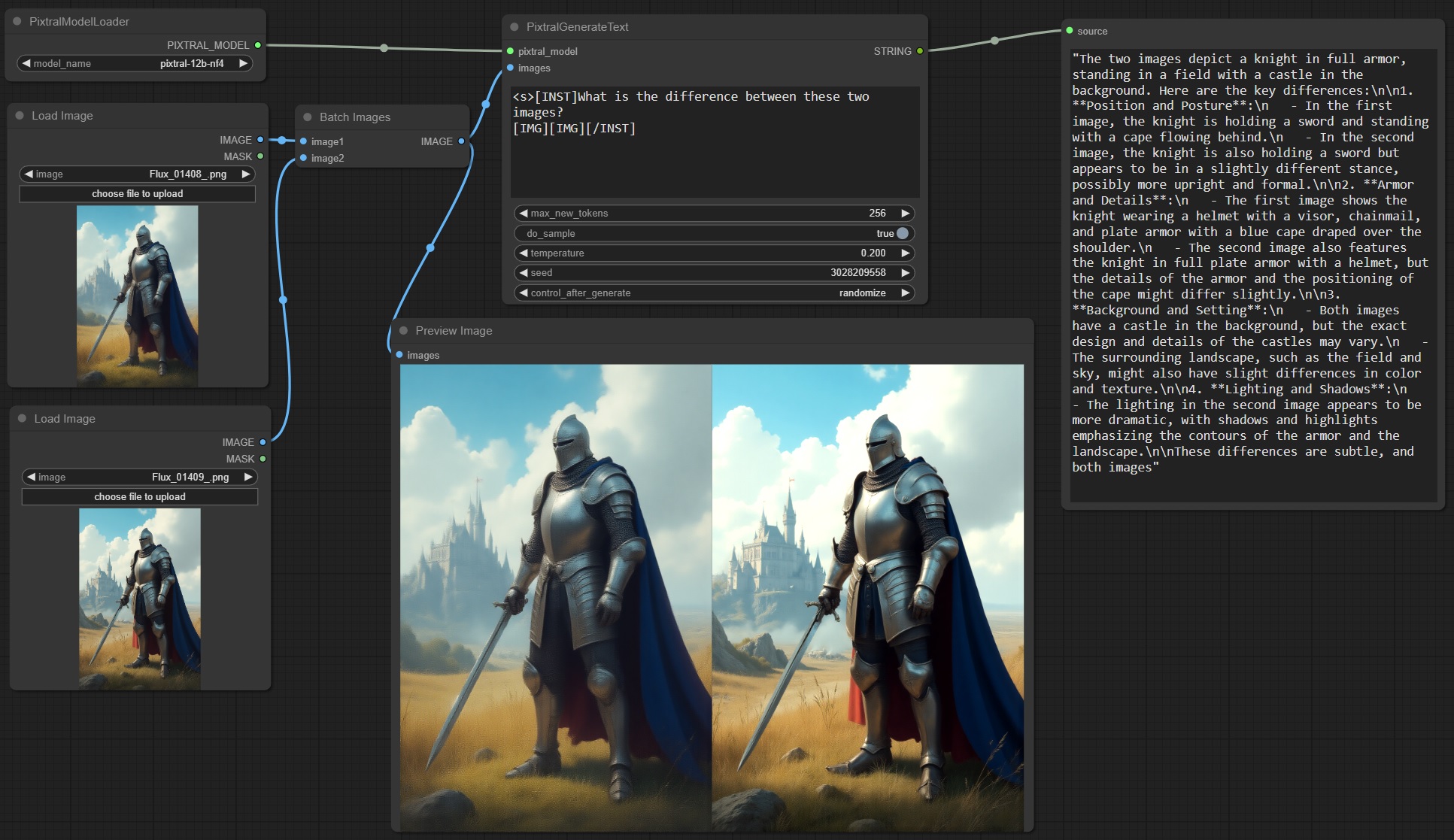
I haven't been able to get image comparison to work well at all with Llama Vision. It doesn't give any errors, but the multi-image understanding just isn't there. The image tokens have to be before the question/instruction and consecutive for the model to even be able to see both images at once (I found this out by looking at the image preprocessor cross-attention implementation), and even then, it seems to randomly mix up which is the first/second, left/right, the colors between them and other details. It doesn't seem usable for purposes involving two images in the same message, in my opinion. Not sure whether the non-quantized model is better at this.
Since Pixtral directly tokenizes the input images, it's able to handle them inline in the context, with any number of images of any aspect ratio, but it's limited by token lengths, since each image can be around 1000 - 4000 tokens.
Example Llama Vision object detection with bounding box:
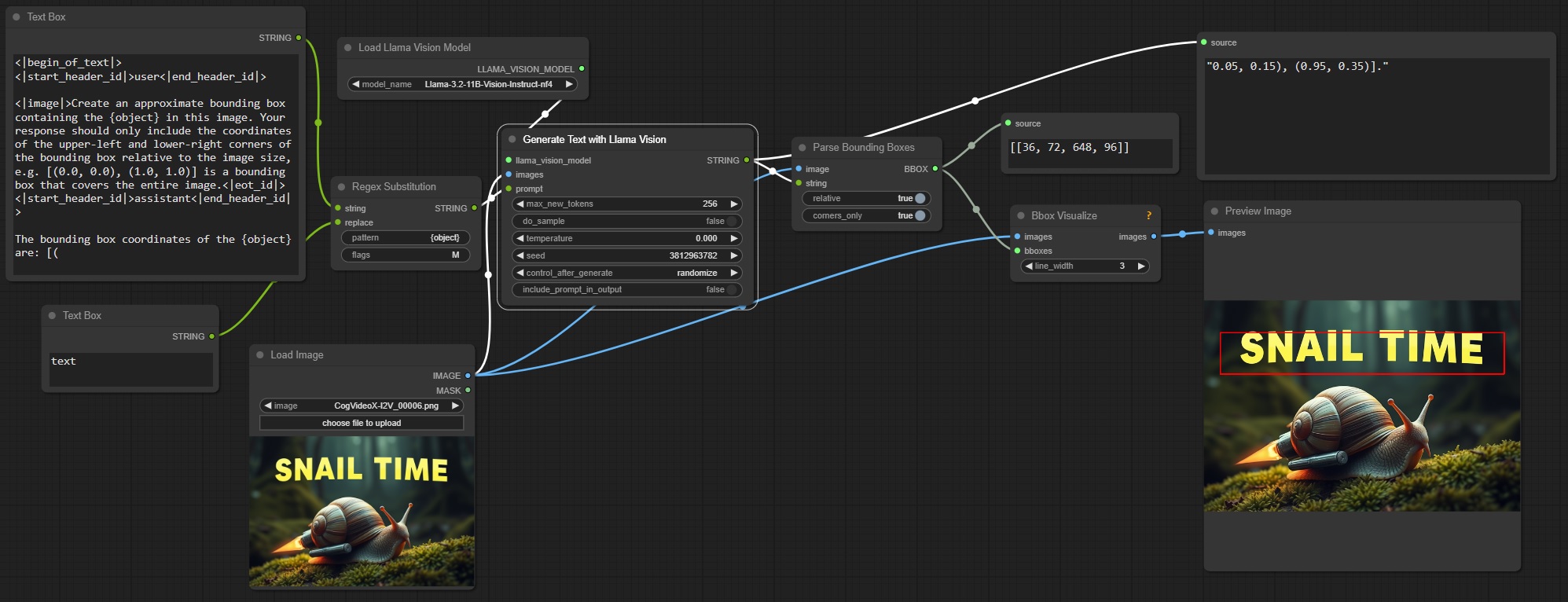
Both Pixtral and Llama kind of work for this, but not that well. They definitely have some understanding of the positions of objects in the image, though. Maybe it needs a better prompt. Or a non-quantized model. Or a finetune. But it does sometimes work. Surprisingly, Molmo is pretty bad at this, though it is capable of pointing and counting.
Example Molmo counting:
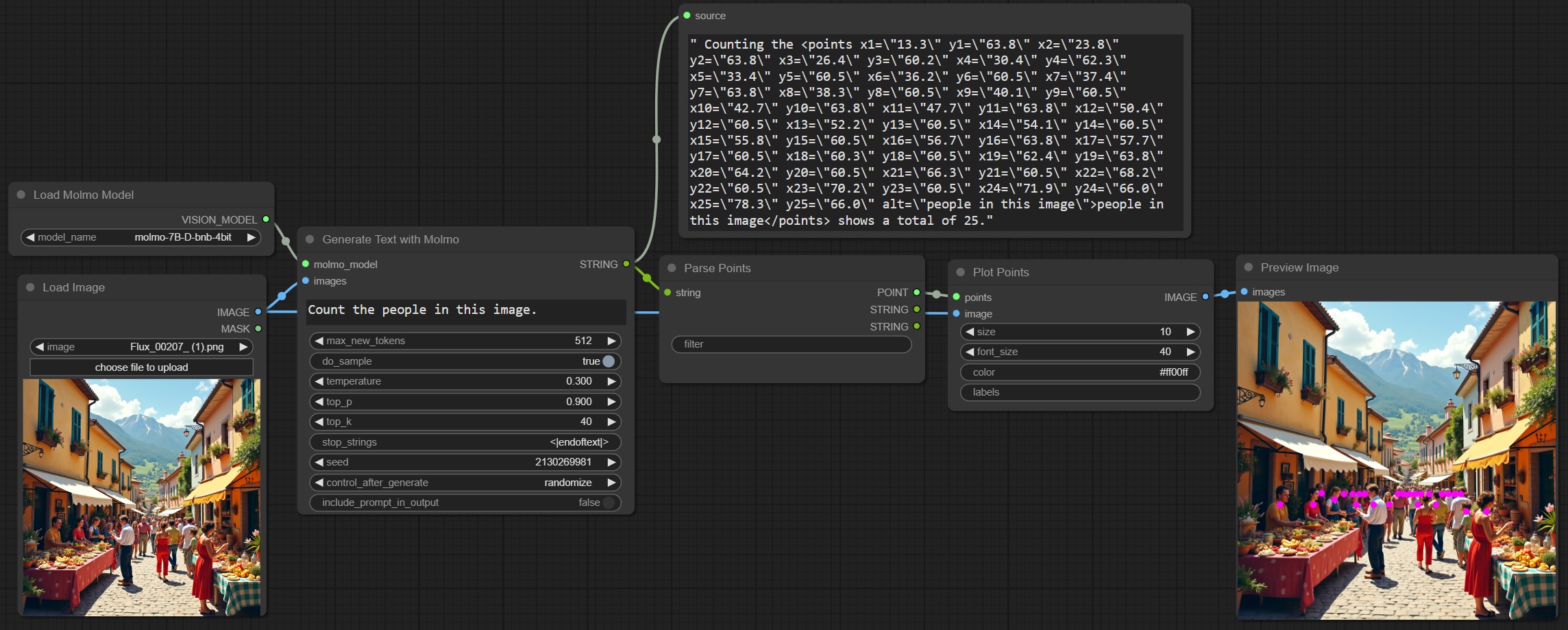
Example Molmo pointing, with labels:
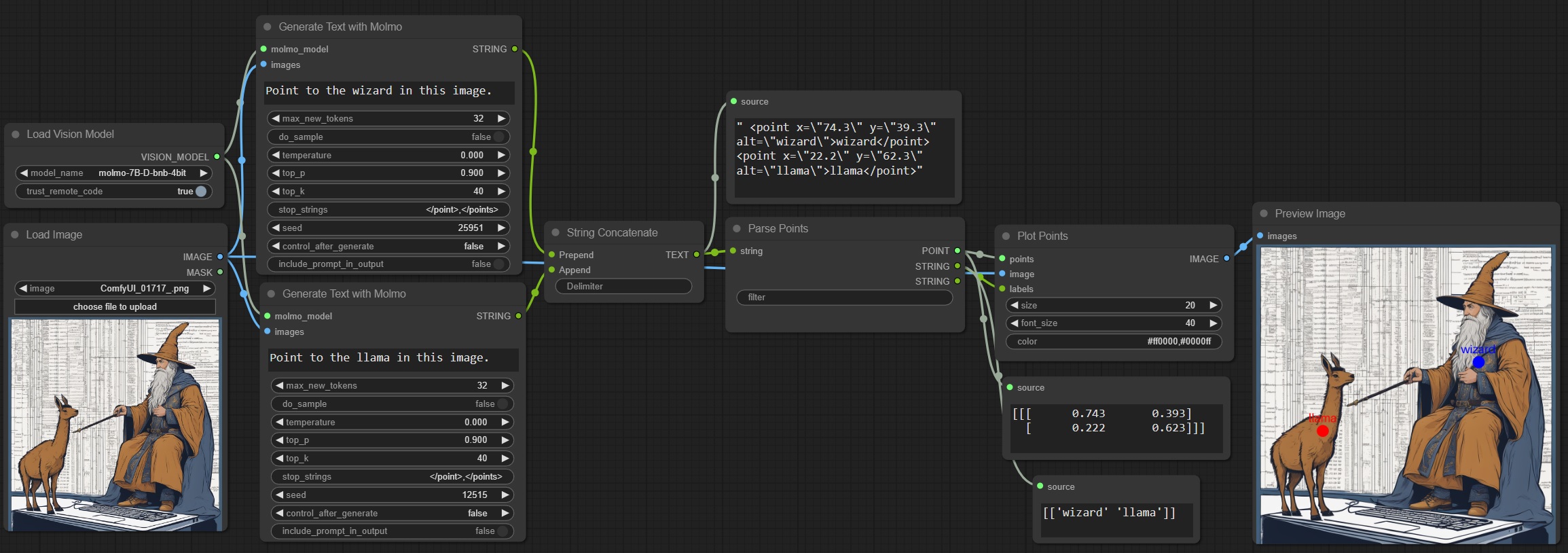
I wasn't able to get it to point at both objects with a single prompt for some reason (it would just assign both labels to both points), but splitting it into two simple prompts like this isn't too bad.